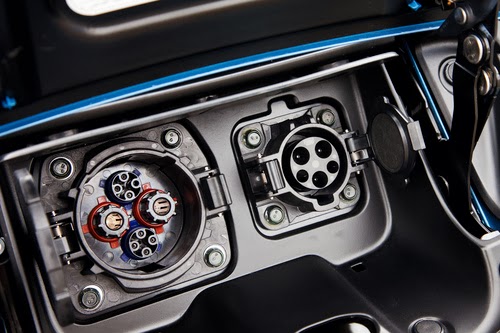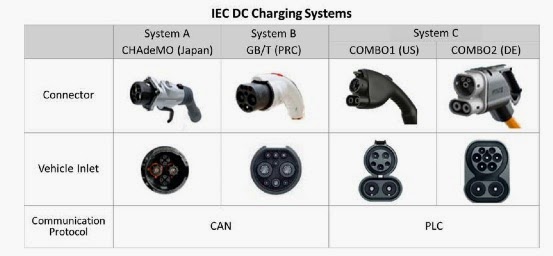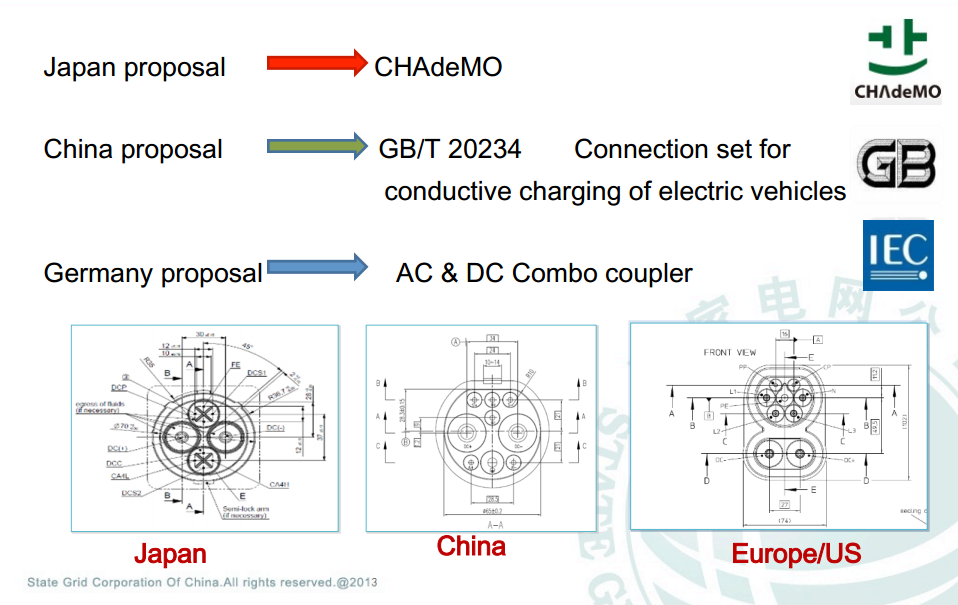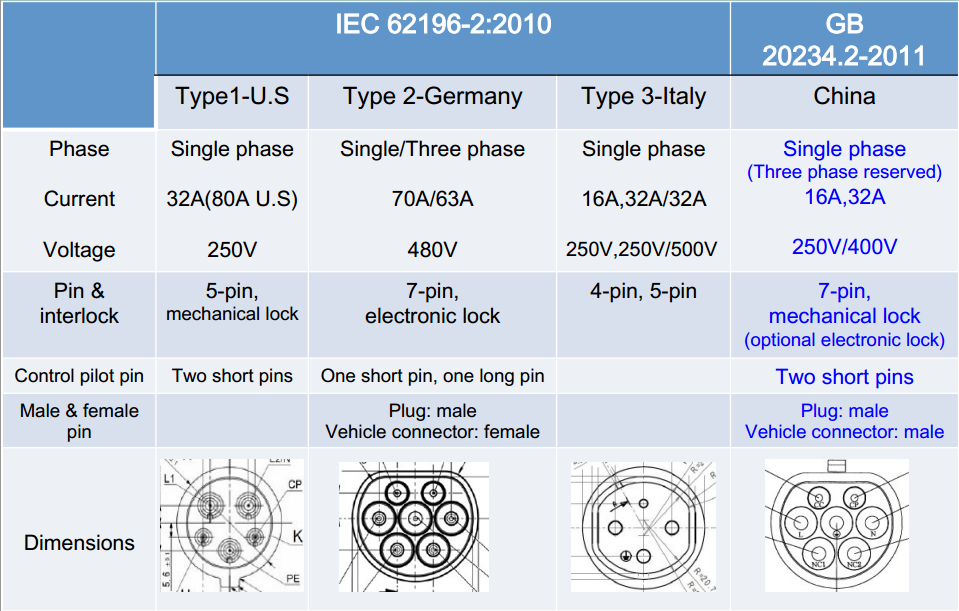DC Fast Charging standards – CHAdeMO, CCS, SAE Combo, Tesla Supercharger
Fast Charging makes electric cars more useful because of the reassurance drivers get knowing they can quickly recharge, and the faster effective trip speed. It seems that car owners with fast-charge capable cars, with enough fast charging stations around them, feel capable of taking longer trips.
While fast charging is often unnecessary, because the optimum charging rate varies depending on the usage scenario the driver currently faces, it sure is convenient that fast charging stations give an almost complete recharge in under an hour. Unlike cars with 6 kiloWatt level 2 charging systems (20-25 miles of range per hour of charging), fast charging’s faster charge rate (50 kiloWatts or more) can supply 100 or more miles of range per hour of charging. A significant fast charging network available should make electric cars more attractive than otherwise, and lead to higher adoption rates.
In some cases it means electric car drivers can take real road trips — blowing up one of the negative electric car stereotypes. (like being be limited to driving a short distance from your home)
Unfortunately, while fast charging electric cars were available in 2011 (Nissan Leaf, Mitsubishi i-MiEV), CHAdeMO charging infrastructure didn’t grow very fast. Some automakers lobbied against CHAdeMO deployment because it wasn’t an SAE-blessed standard. Instead the CHAdeMO was standard co-developed by TEPCO and the Japanese automakers. Instead of adopting CHAdeMO, the SAE developed their own fast charging standard (Combo Charging System), Tesla Motors developed a proprietary fast charging system (Supercharger), and the Chinese developed a different fast charging standard.
Fast charging adoption happened more slowly that it might have
Perhaps, Electric car adoption was delayed because of slow fast charging infrastructure build-out
As of 2015 there are three (or four) fast charging standards in various stages of adoption, causing a certain amount of pain to electric car drivers – we can’t just go to the closest fast charge station, we have to find the one that’s compatible with our car
What we have in 2015 is a multi-way electric car fast charging standards battle. Consumers are caught in the middle not knowing which fast charging standard to support, not knowing enough to know how to choose between them. Fortunately some of the automakers appear to be acting to soften the pain of incompatible fast charging standards by deploying multi-protocol fast charging stations.
What we deserve is ubiquitous fast charging stations with a unified fast charging protocol. Our gasoline powered brethren have a unified standard for gasoline pump nozzles, we deserve the same for fast charging.
With multiple competing fast charging standards adapters would be a useful product, to enable fast charging from an otherwise incompatible charging station. While Tesla Motors is selling a CHAdeMO-to-Tesla adapter, it seems such adapters might have limited popularity due to expense and deployment of dual-protocol charging stations.
Post time: Jul-26-2020




